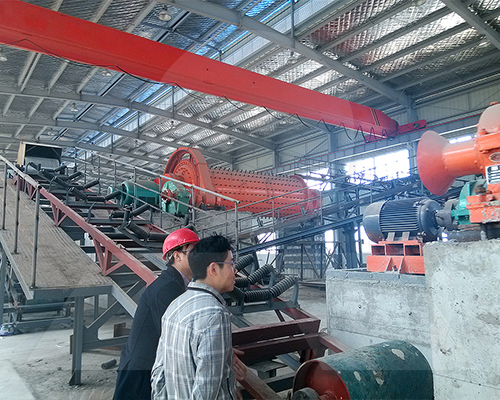Optimizing Raw Material Grinding Size and Feed Capacity in Ball Mills
Ball mills are essential equipment in industries like mining, cement, and ceramics for grinding raw materials into fine powders. Two critical factors that determine the efficiency and effectiveness of a ball mill are the grinding size of the raw material and the feed capacity. Understanding and optimizing these parameters can significantly enhance the performance of the mill and improve overall production.
1. Importance of Raw Material Grinding Size
The size of the raw materials fed into the ball mill plays a crucial role in determining the quality of the final product. If the particles are too large, they may not be ground finely enough, leading to poor product quality and increased energy consumption. Conversely, excessively fine particles can lead to over-grinding, which may result in wasted energy and unnecessary wear on the mill components.
Optimizing the grinding size involves selecting the right initial particle size that allows for efficient grinding without overloading the mill. The ideal raw material size typically depends on the nature of the material being processed and the desired final product characteristics. For instance, harder materials may require smaller initial sizes to facilitate easier grinding.
2. Determining Optimal Feed Capacity
The feed capacity of a ball mill is another critical factor that affects its performance. It refers to the amount of raw material that the mill can process at a given time. Operating the mill at the optimal feed capacity ensures that the grinding process is efficient and that the mill operates smoothly without unnecessary strain.
Feeding too much material into the mill can cause the grinding media to become overloaded, leading to a drop in grinding efficiency and potentially causing damage to the mill. On the other hand, feeding too little material may result in under-utilization of the mill’s capacity, leading to lower production rates.
To determine the optimal feed capacity, it’s important to consider the type of material being processed, the desired fineness of the final product, and the mill’s design specifications. Regular monitoring and adjustments to the feed rate can help maintain optimal performance.
3. Balancing Grinding Size and Feed Capacity
Achieving the right balance between raw material grinding size and feed capacity is key to maximizing the efficiency of a ball mill. By carefully selecting the initial particle size and continuously monitoring the feed rate, operators can ensure that the mill operates at peak efficiency.
In some cases, adjustments to the mill’s operational parameters, such as the speed of rotation and the size of the grinding media, may be necessary to achieve the desired balance. Additionally, regular maintenance and inspection of the mill components can help prevent issues related to grinding size and feed capacity.
4. Impact on Energy Consumption and Product Quality
Optimizing the grinding size and feed capacity not only improves the performance of the ball mill but also has a significant impact on energy consumption and product quality. Properly sized raw materials and a well-calibrated feed rate reduce the amount of energy required to achieve the desired grind size, leading to cost savings and more sustainable operations.
Furthermore, maintaining the right balance ensures that the final product meets quality standards, which is crucial in industries where product consistency is vital, such as in cement production.
Conclusion
Optimizing the raw material grinding size and feed capacity in ball mills is essential for achieving efficient and effective milling operations. By understanding the relationship between these two factors and making necessary adjustments, operators can enhance the mill’s performance, reduce energy consumption, and produce high-quality products. Regular monitoring and fine-tuning of these parameters are key to maintaining a well-balanced and productive milling process.
- > The Superiority of Hydraulic Cone Crushers Over Traditional Cone Crushers
- > Cone Crushers for Coal Processing in Morocco
- > The Application of Mobile Jaw Crushers in Mine Tunnel Support Gravel
- > Basic Troubleshooting of Jaw Crusher Issues
- > Comparison of Crushing Equipment Selection for Granite and Basalt: Key Differences and Considerations
- > Iron Sand Processing Crushing Plant: Key Steps, Equipment, and Benefits
- > Jaw Crusher Processing Technology for Open-Pit Gold Mining in Indonesia
- > The Application of Mobile Jaw Crushers for Limestone in South Africa
Hot Product


Online




Message

